Across continents — Zak Ové preserves father’s artistic legacy
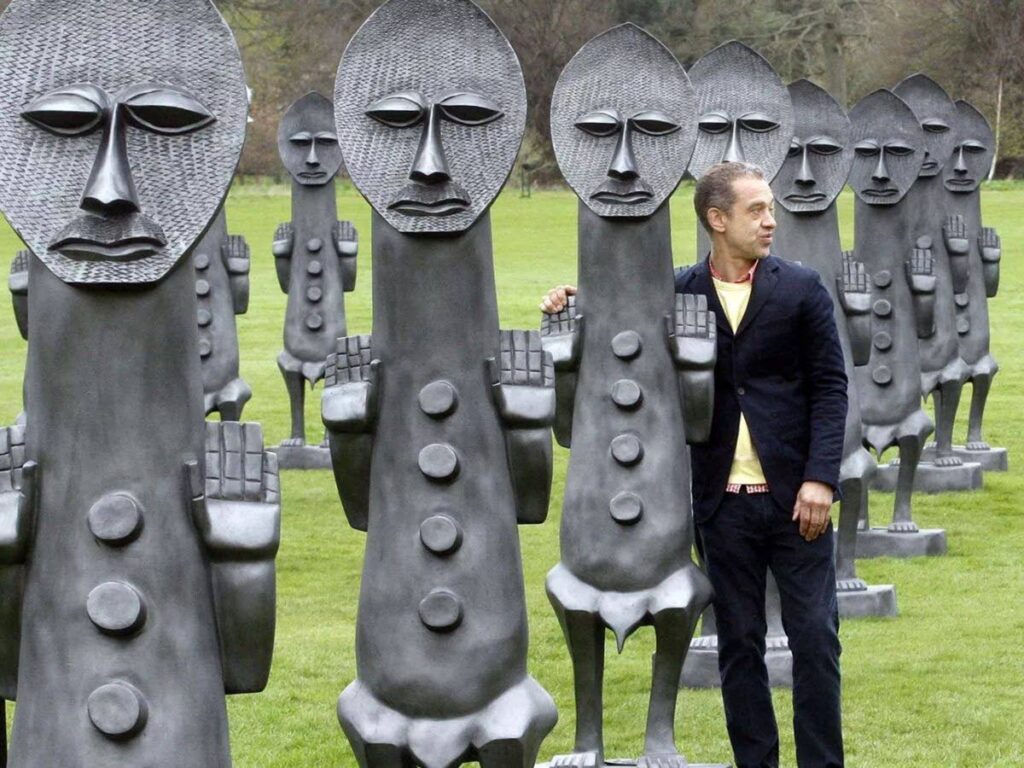
RAY FUNK
Artist Zak Ové seems to be everywhere these days in exhibitions all over Europe and North America, doing remarkable and varied artwork.
In the last year, his work has been on display at galleries in Europe to North America. Son of the legendary Trinidad-born filmmaker Sir Horace Ové, Zak Ové was first known as a filmmaker and photographer but is now better known for large public sculptures and dynamic collages from crochet doilies, old fabric pieces, and more.
In 2015, for the Great Court of the British Museum, Ové created two 23-foot sculptures of moko jumbies as part of the Celebrate Africa exhibit.
They have since been moved to be part of the Sainsbury Africa Galleries in the museum, and Ové became the first Caribbean artist to have his work in the museum’s permanent collection.
The National Gallery of Ontario then commissioned another moko jumbie statue that went on display starting in 2021, but because of his schedule, it was only on February 28 this year that he got to do an artist’s talk at the gallery.
His work is also featured in a show that just opened in Texas on Surrealism and Us: Caribbean and African Diasporic Artists Since 1940, at the Modern Art Museum of Fort Worth.
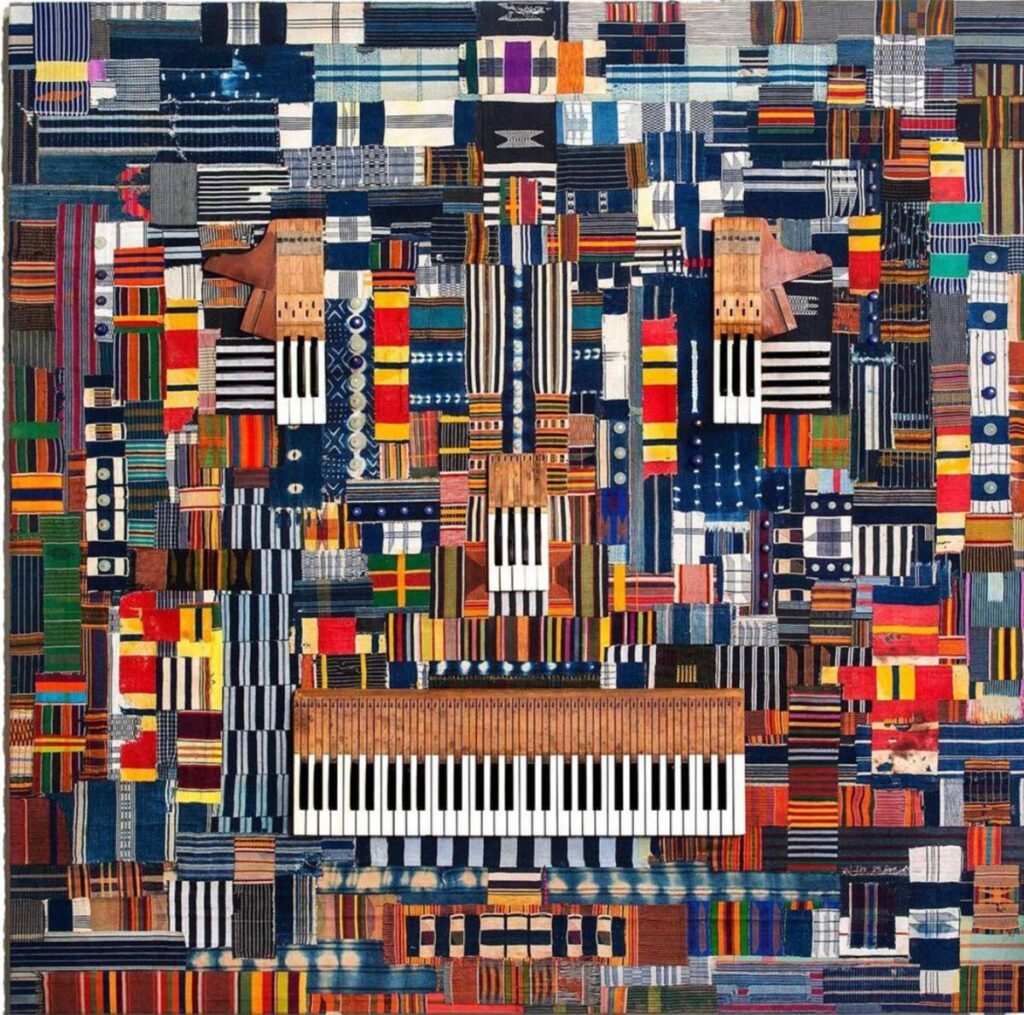
Public sculpture
The large moko jumbie sculptures are but part of a growing and eclectic number of massive public sculptures Ové has created, which are incredibly varied and impressive and have appeared in different settings.
His Mothership Connection is a nine-foot-tall rocket ship with blinking lights, which was on display in Regent’s Park in London.
As he told Frieze magazine, “I have had a long interest in Afro-futurism, which features in a lot of my work – the idea of time travel between the past and the future – and for me the use of lights really helps give it a life force and a sense of breath. I tried to make a totem that spoke about the African diaspora…I have tried to use, through the sections, a discourse on various styles of architecture that were either built by slaves or indentured laborers.”
The piece is named after an album by the American funk band Parliament.
“I remember seeing George Clinton and Parliament in 1976, the year Star Wars came out,” Ové recalls. “When he entered the stage in a spaceship it blew me away!”
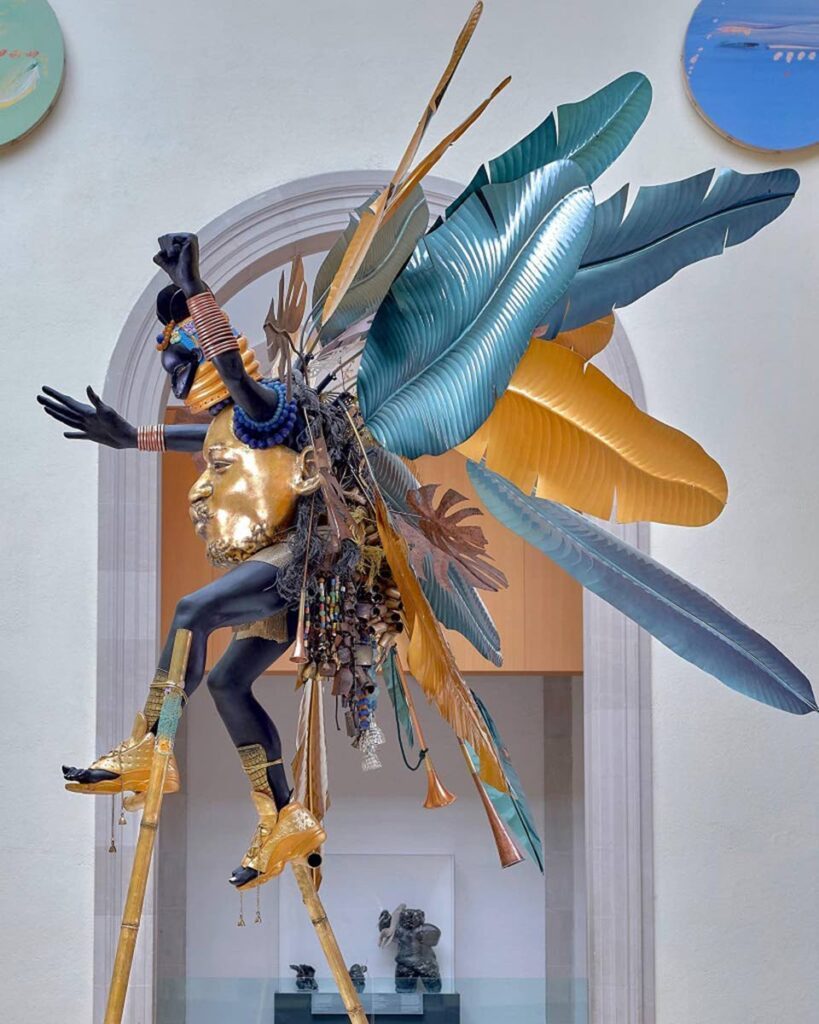
His most famous public work so far may be his “army” of statues, the Invisible Man and the Masque of Blackness. They are 40 identical six-and-a-half-feet-tall graphite figures. The image is based on a small piece of Kenyan art his father gave him when Zak was young. These massive sculptures were first installed in 2016 at Somerset House in London and have since been displayed in Yorkshire and in California.
While they have been referred to in the press as an army, they are far from militaristic, as Ové told SF Weekly, “They ingratiate people, where you can pick a guy and have a moment, almost like a selfie booth,” said Ové.
“Their greeting – their hand language, and their expressions on the face – doesn’t feel in any way confrontational. ‘Regal’ and ‘elegant’ are words that come to mind. They’re bright and optimistic. I wanted to show strength without showing aggression.”
Entirely different is Autonomous Morris – a massive head made from car parts. As Ové told Country and Town House magazine, “A lot of my practice looks at old-world cultures and how I can reinvigorate them with new-world materials, which led me to wanting to make masks out of car parts. That led me to wanting to make this head, in particular, out of VW parts and Morris minor parts, because of their lovely curvatures.”
Since 2018 it has been on display in London parks.
His most recently displayed large piece, Virulent Strain, was first shown last autumn at the Saatchi Gallery in Belgium.
Ové described it on Facebook: “The mask was remade from a Kifwebe Luba mask from the Congo. This particular mask reappears in my work frequently.
“In my practice one of my threads of investigation is African cultural resistance and the struggle by Caribbean and diasporic people to uphold their own secular culture, guided by African identity.”
Besides his own work, Zak Ové has become an important curator for black British art in UK.
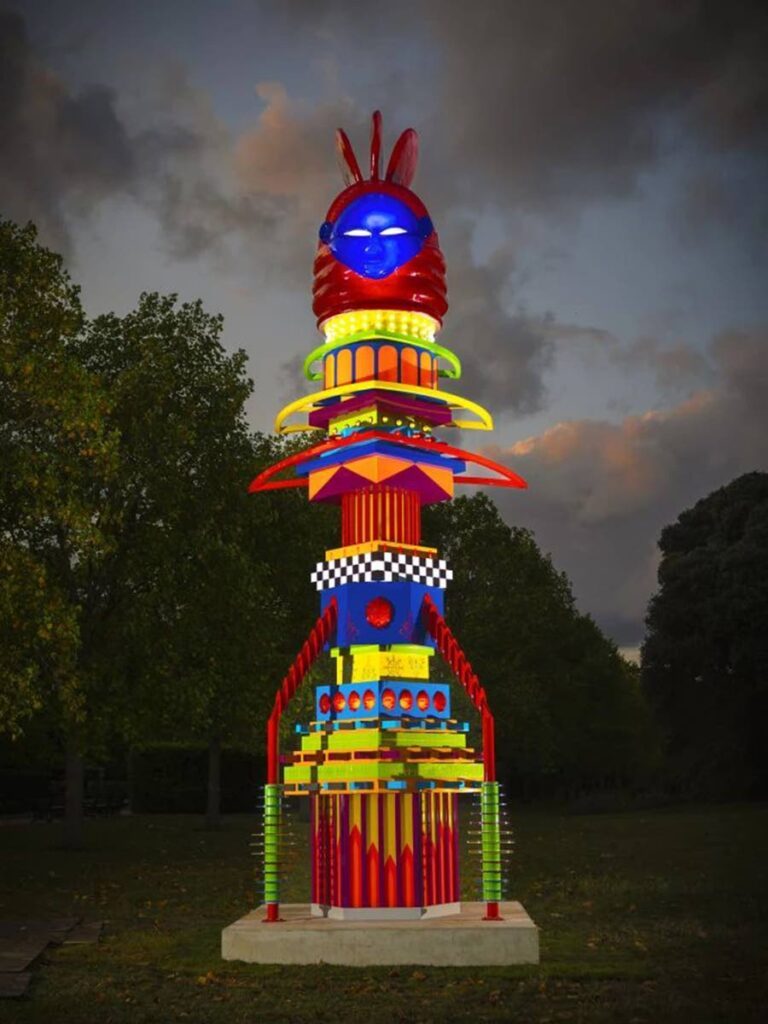
New work
But these large sculptures are only part of his work these days. His 2021 show at the De Buck Gallery in New York City featured nine large “doily paintings,” which launched a new phase of his art that involved putting together bright crochet pieces he collected.
When asked by Artnet, he discussed the origins of these unique pieces.
“I have a real love for doilies and for crochet and I think it comes from my childhood memories of being at my grandmother’s. Doilies were always used in the special rooms that we were never allowed in. It was very much an upwardly mobile sense of embetterment for a lower-middle-class family in the Caribbean to feel that they were coming up in the world...
“I became interested in a sort of ‘Granny Psychedelia’ that was taking place – that these doilies were often made by repressed women through the 1970s and 1980s in Catholic family homes across South America, across Eastern Europe, across Africa.
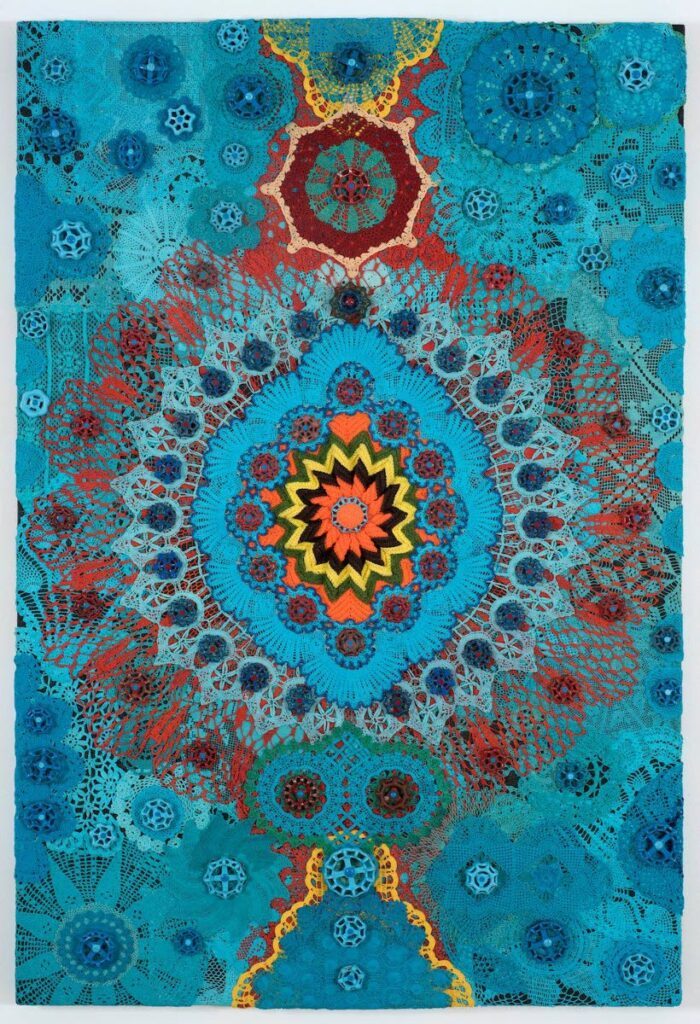
“And what I liked was the way suddenly these sort of fluorescent bright colours would appear in the landscape of the home, to break that repression and give them a sense of freedom. When amassed, when you see hundreds of these things together. it becomes almost like a coral reef, but it sings of that experience in volume like a choir.”
As he noted in an Instagram post, a trip to Ghana has inspired a new series of similar collage pieces involving recycled African fabric.
“On a recent trip to the fabulous city of Accra in Ghana at the invitation of Gallery 1957, I was able to source antique hand-loomed kente strips in the market. I wanted to try working with kente as a heritage fabric on a new series of abstracted wall-based artworks, similarly to how I had been working with crochet and doilies. Each warn strip of embroidered woven kente has its own unique story, en masse the faded memories of lives lived.
“I have used these kente strips in abstract combinations, with local hand-made glass beads and broken piano parts, to create a Masque for Anansi’s dance. The kente is overlaid to become a complex skin.”
A father’s legacy
Ové has always acknowledged his father’s influence on his art and acted to preserve his father’s legacy. (Horace Ové died in September 2023.)
“You have to talk about how my pioneering father shaped me.”
Beyond how it affected his artistic practice, he said, “My father gave me a vision of life and how to recognise stories, especially untold stories that needed to be told. He was an activist…a maverick; he stood up to the injustices.”
In 2019, he was the curator of a major exhibition at Somerset House, Get Up, Stand Up Now, built on artists who came after his father, as noted in the catalogue: “Beginning with the radical back filmmaker Horace Ové and his dynamic circle of Windrush-generation creative peers and extending to today’s brilliant young black talent globally, a group of 110 interdisciplinary artists are showcasing their work together for the first time, exploring black experience and influence, from the post-war era to the present day.”
Zak Ové curated a major tribute to his father for the 2021 TT Film Festival, which featured six of his feature films, and for which he did an extended interview on his father’s work and legacy, which is still available on the ttff website.
Last autumn, the British Film Institute mounted a large retrospective, Power to the People: Horace Ové’s Radical Vision, showing a wide range of his films. A major part is the re-release of his groundbreaking first feature Pressure, which has been newly restored and digitised. It was also featured at the New York Film Festival and will be issued by Criterion Collection.


Comments
"Across continents — Zak Ové preserves father’s artistic legacy"